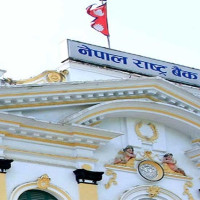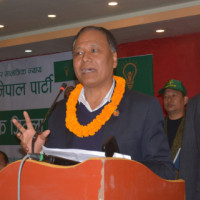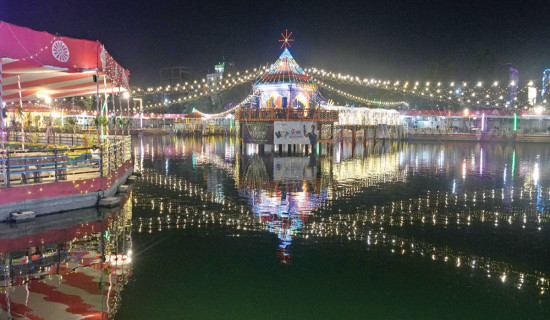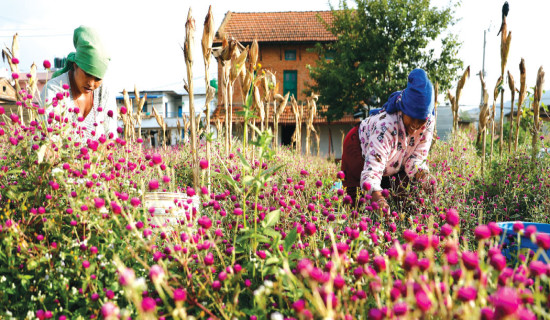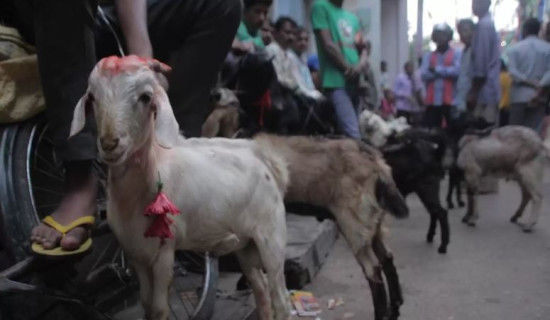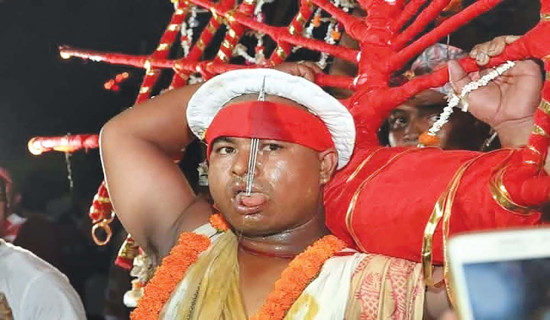- Tuesday, 16 December 2025
Sora Hiti spout regaining lost splendour
Kathmandu, June 30:The long neglected and forgotten stone spouts Sora Hiti, which lies on the way to Kamalpokhari from Durbarmarg, may now return to its former glory, thanks to the efforts of heritage campaigners.
Under their initiative to preserve the culturally and archaeologically important water conduits of the Kathmandu Valley, a team led by activist Yadav Lal Kayastha began clearing and repairing the hitis, which had been covered by overgrown bushes and garbage, in July of 2019. After three years of work, partially disrupted by the COVID-19 pandemic, the fountains are now on their way to regaining their lost splendour.
In Nepal Bhasa, Sora Hiti means three stone taps and this is what gives the place its name Tindhara Pathsala. The water from here was once used by the students and teachers of the Pathshala for drinking and washing and it is one of the four fountains located at the four corners of Ranipokhari.
However, ignorance and apathy from the state and the locals had caused them to vanish from public consciousness to such an extent that many youths do not even know of its existence.
“The denigration happened over the past two decades,” shared Fal Prasad Timilsina, caretaker of the nearby Baneshwor Mahadev Temple. “People threw garbage here and the entire structure got covered by grass and weed.”
Timilsina has been living at the rest house built on the temple premises since 1990 and has seen the hiti’s decay first hand.
“Street children used the fountain area as their shelter and collected garbage here. They used to make fires below the three taps during winter which heated the stone to such an extent that they blasted in 2004 or 2005,” he said.
The Department of Archaeology (DoA) collected the broken pieces and rebuilt two of the three hitis while one could not be salvaged and was replaced with a new one, Kayastha also informed.
Sora Hiti will hopefully find new life now. Campaigner Kayastha told The Rising Nepal that the water channel for the hiti was in good condition and that water had started trickling from the taps following their renovation. He also said that work on beautifying the fountain remained and would be completed soon.
Timilsina also remembers water flowing out of the three taps until 1999. “It dried after Sherpa Mall deep bored and took the water out,” he said.
Minister for Culture and Tourism of Bagmati Province Dipendra Shrestha had also recently visited the hiti site and had highlighted the need to conserve the stone taps located at the other three corners of Nhu Pukhu, known popularly as Rani Pokhari.
As per a city inventory conducted by the DoA in 1993, Sora Hiti was built in the 14th century by Laxmi Das Bharo. The Department has orally committed to provide Rs. 2 million to restore it.
“The DoA has said that the budget will be allocated after we submit all expense-related documents at the office,” Kayastha said. “So far, we have invested Rs. 380,000 from our pockets.”
Meanwhile, Kayastha’s team has located another of the four hitis surrounding Rani Pokhari inside the compound of Nepal Electricity Authority (NEA) at Ratnapark. They have written to the Authority’s Managing Director Kulman Ghising asking for permission to excavate it.
“Ghising has asked us to approach through the DoA so we will visit the Department in a few days,” he added.





